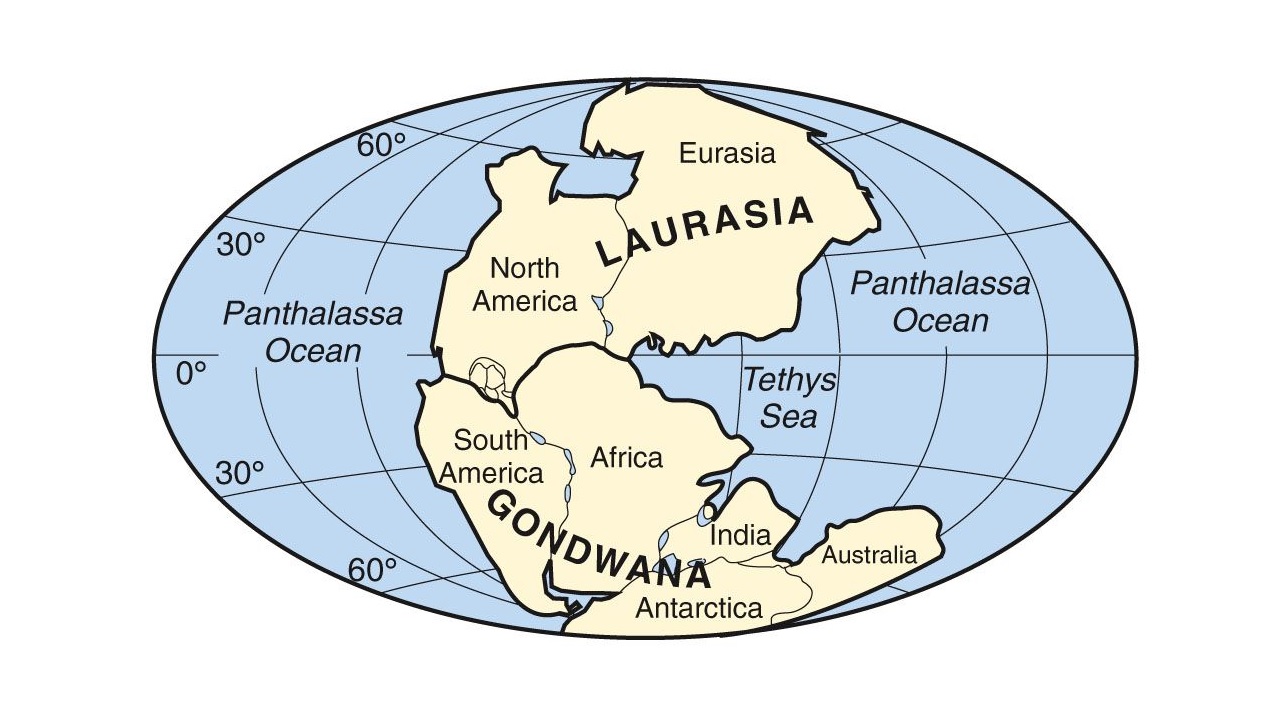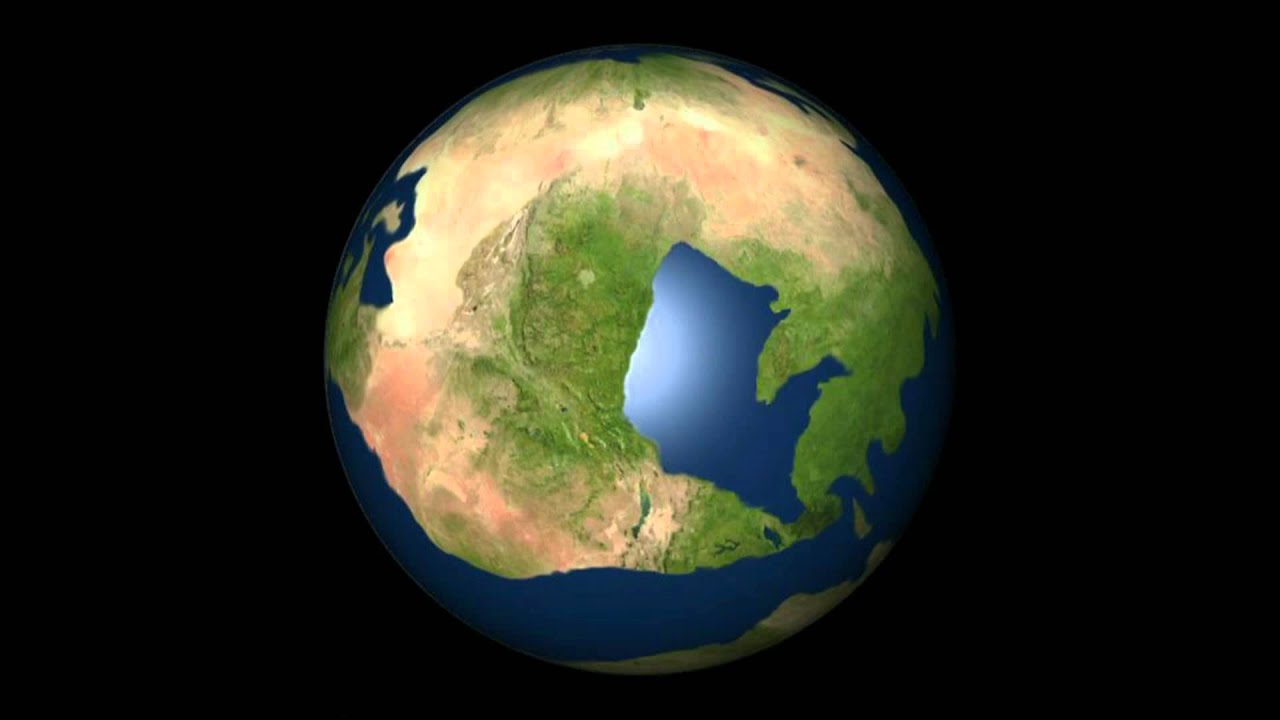Have you gone on vacation recently? For example, somewhere on the Mediterranean coast. Have you ever thought that the sea you are in is actually the Tethys Sea, which was formed millions of years ago while you are swimming with pleasure? Let’s take a closer look at the Tethys Sea, which emerged when the supercontinent broke up and formed the Earth we know today.
You know the story; Earth was first a cloud of gas and dust. It turned into a planet under the influence of the spinning gravitational pull. There was only one continent on this planet and a giant ocean surrounding it. Then this single continent broke up and the Earth we know today was formed. However, as these continents disintegrated, that giant ocean also spread into the voids and The Tethys Ocean, or Tethys Sea, with a different name, formed, of which few parts still remain today.
After its first formation, the Tethys Sea spread due to continental movements and islands formed by underwater volcanoes. It is strange, The largest remnants of the Tethys Sea are still found in our country and the Caucasus. In other words, many seas in which we swim with pleasure today actually have a history of hundreds of millions of years. Let’s take a trip to the ancient times of the Earth and take a closer look at the Tethys Sea that emerged during the formation of the continents.
What is the Tethys Sea? A single body of water that dominates the entire Earth:
Let’s go back a bit, a few hundred million years ago. about today 335 million years ago Earth consisted of a single continent and a single body of water surrounding it. Today, the only continent Earth has is Pangea, and the water body surrounding it, the giant ocean, is called Pantalassa. Everything was going well during this period. Until the breakup begins.
Something happened about 200 million years ago, in what we call the Triassic today. Earth’s only giant supercontinent began to disintegrate. A gap formed between the continent, which was first divided into Laurasia and Gondwana. As the water mass around this continent was fluid in accordance with the basic physics rules, it filled that void and the Tethys Sea emerged.
So where is the Tethys Sea?
The concepts may sound a bit complicated, so it’s worth explaining a little. one of the continents that formed after the supercontinent broke up Lavrasia in the north was located and contained present-day North America and Eurasia. Another continent formed Gondwana is in the south. was located and contained the continents of today’s South America, Africa, Antarctica, and Oceania.
Where was the Tethys Sea? Right in the middle. Because after the supercontinent broke up, first a big gap opened in the middle and The mass of water surrounding the giant continent filled this void. After the Permian period, which is the sixth part of the Paleozoic period, the Lavrasya and Gondwana continents expanded in the east direction, allowing the Tethys Sea to spread.

What happened to the Tethys Sea as the continents broke apart?
As the continents of Laurasia and Gondwana expanded in the east, the process of formation of the Tethys Sea continued to progress. A portion of the Tethys Sea that opened in the Permian and closed in the Triassic. It was later named Paleotethys. Another section that opened and closed after the Triassic period is called Neotethys.
In the third time period called the Tertiary Neotethys was completely closed because The continents of Laurasia and Gondwana collided. In this collision, a movement called the Alpine Orogeny took place and as a result, the Alpine-Himalayan mountain system was formed. During the Cretaceous period, the third subdivision of the Mesozoic era, the Tethys Sea gradually narrowed towards the west.
Tethys wasn’t the only sea that was created by the giant body of water filling in the gaps after the giant supercontinent broke up. The Atlantic Ocean was also formed during this period. As the Atlantic Ocean spreads northward The eastern part of the Tethys Sea is completely closed. As a result of the northward movement of the Arabian, Indian and African plates, the Alpine – Himalayan mountain belt formation process has progressed. These points used to be the Tethys Sea floor.
Where is the Tethys Sea today?
When we look at which continents the Lavrasya and Gondwana continents contain today, we see that the middle point, namely the Tethys Sea, is the lands we live in today and neighboring regions. So today Mediterranean, Black Sea, Aral Sea and Caspian Sea All these areas we call are actually the remaining parts of the Tethys Sea, which was formed 200 million years ago.

Continental movements forming the Tethys Sea and their results:
In the plate movements that occurred after the Tethys Sea, Africa came under Europe. This compression force accompanied by an increase. In the next period, as a result of the repeated collisions of the African and Eurasian plates, many faults and rock folds were formed, as well as deformation in the water beds connected to the Tethys Sea.
As a result of all these plate movements and collisions, volcanic activities increased. Volcanoes, especially on the ocean floors, their peaks had grown large enough to rise to the surface of the water and create islands. We can tell from the deep-sea sediments and portions of oceanic crust superimposed on continental crust that the compression in these regions was intense even today.
In this process, the Indian plate and the Asian plate, located in the east of the Alpine-Himalayan region, were converging. about 50 million years ago The continent that is today India, Arabia, Italy, the Balkans, Greece and Turkey collided with the rest of the Eurasian continent. The results of this can be seen even today.
As a result of the collision of the continental part that includes the countries we have mentioned and the other part of Eurasia, the Alps and Carpathians along the northern edge of the Mediterranean, the Spanish edge, the Northwest African edge, the South Asian edge, which form a large part of this continental region. Alpine-Himalayan mountain ranges emerged. The rest of the Tethys Sea, as we said, formed the Mediterranean, Black Sea, Aral Sea and Caspian Sea. In other words, all these events that took place millions of years ago determined the natural limits of today.
It was formed hundreds of millions of years ago and whose effects we can still see today. What is the Tethys Sea, when was it formed, how was it formed and where We talked about the details you need to know about the subject by answering frequently asked questions. Let’s not forget that studies are still going on about the formation process of the Earth and what happened after, and maybe all this we know can be refreshed with brand new information. You can share your thoughts on the subject in the comments.
